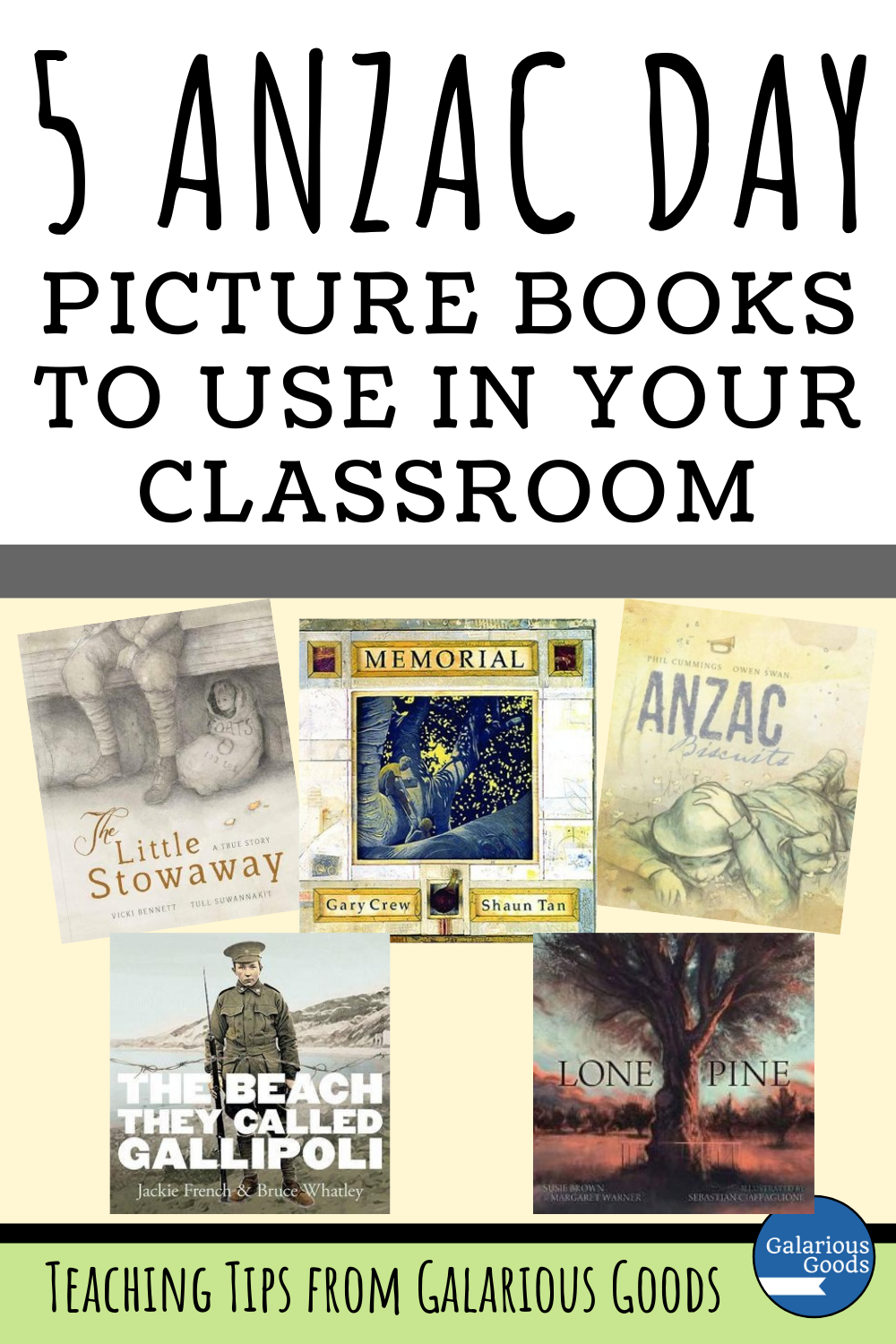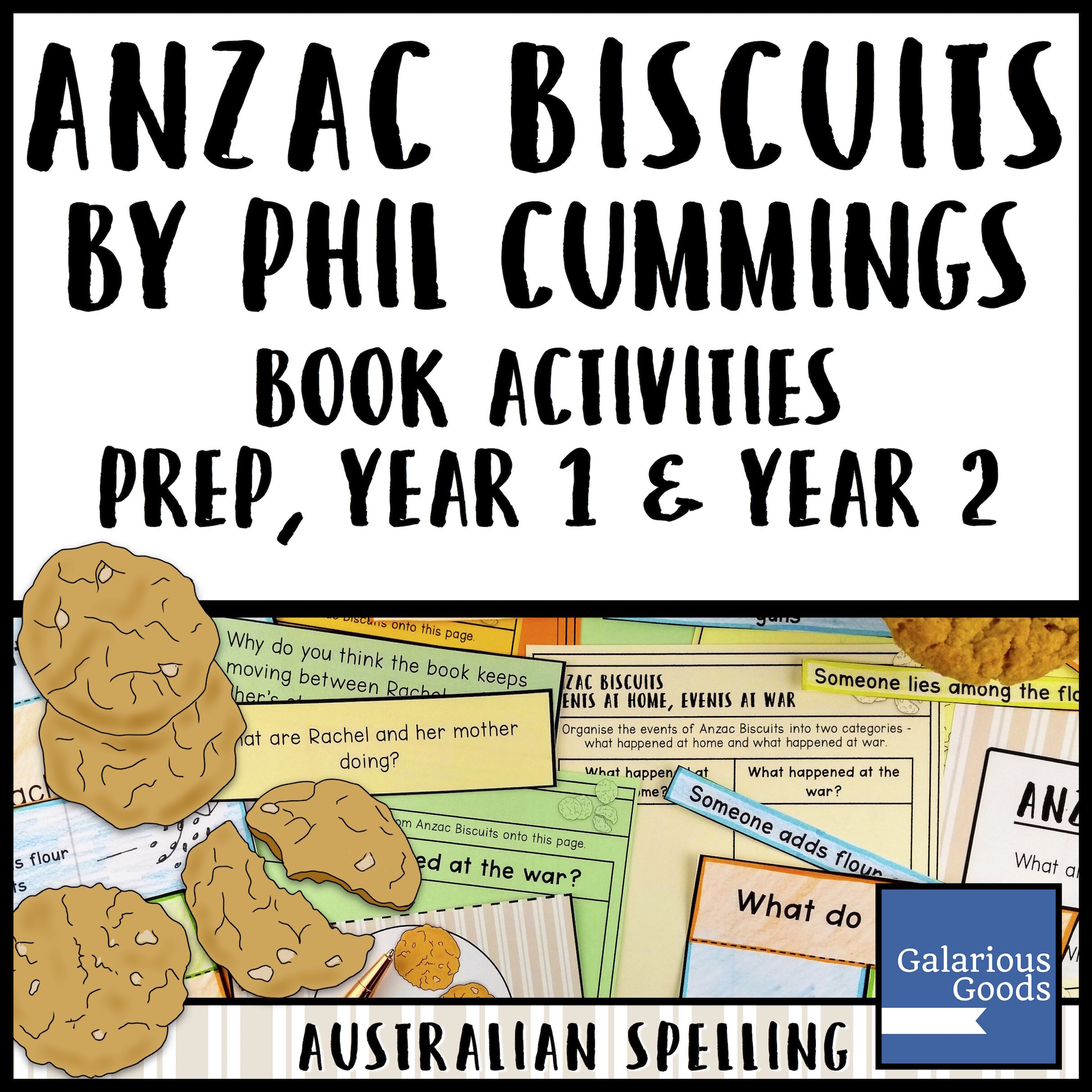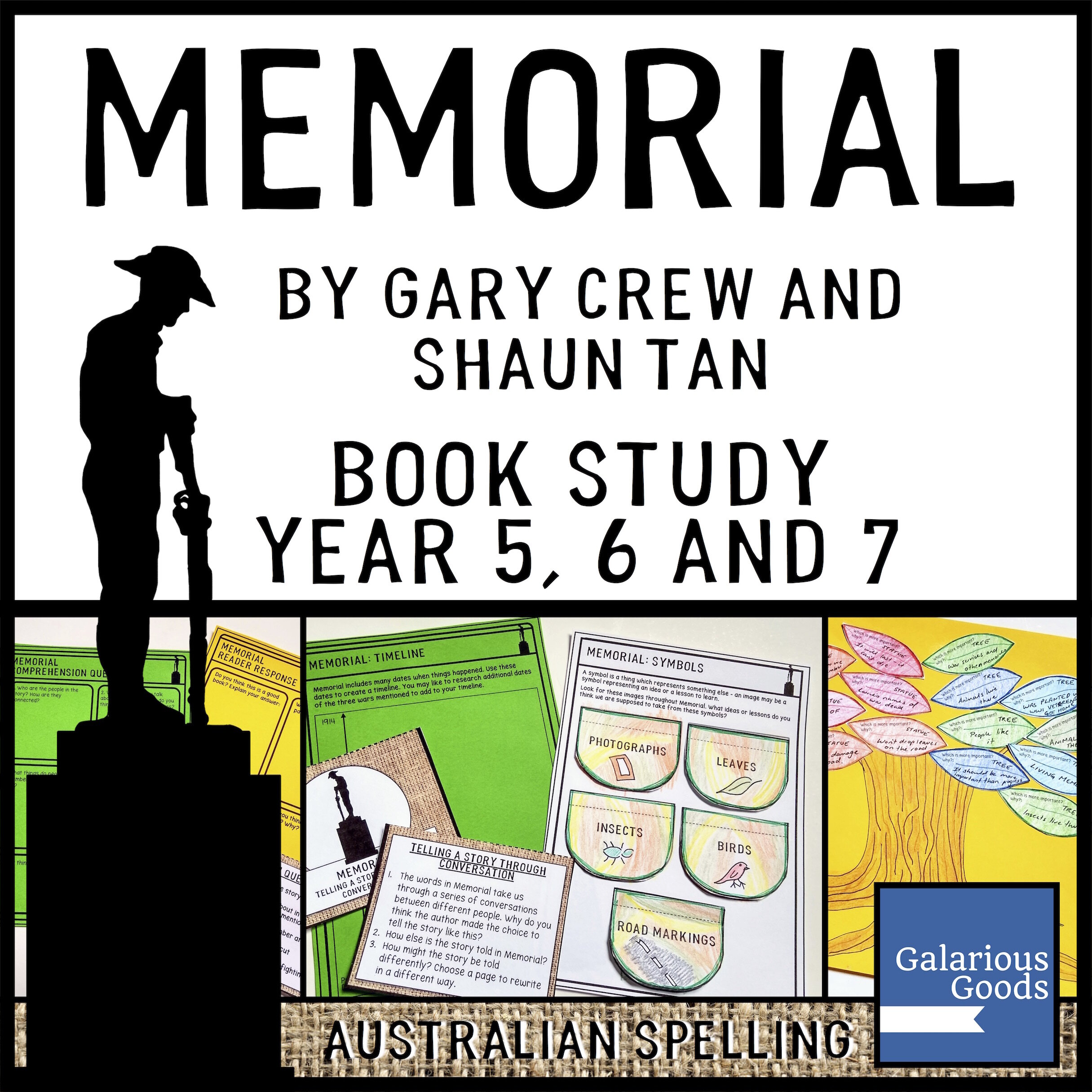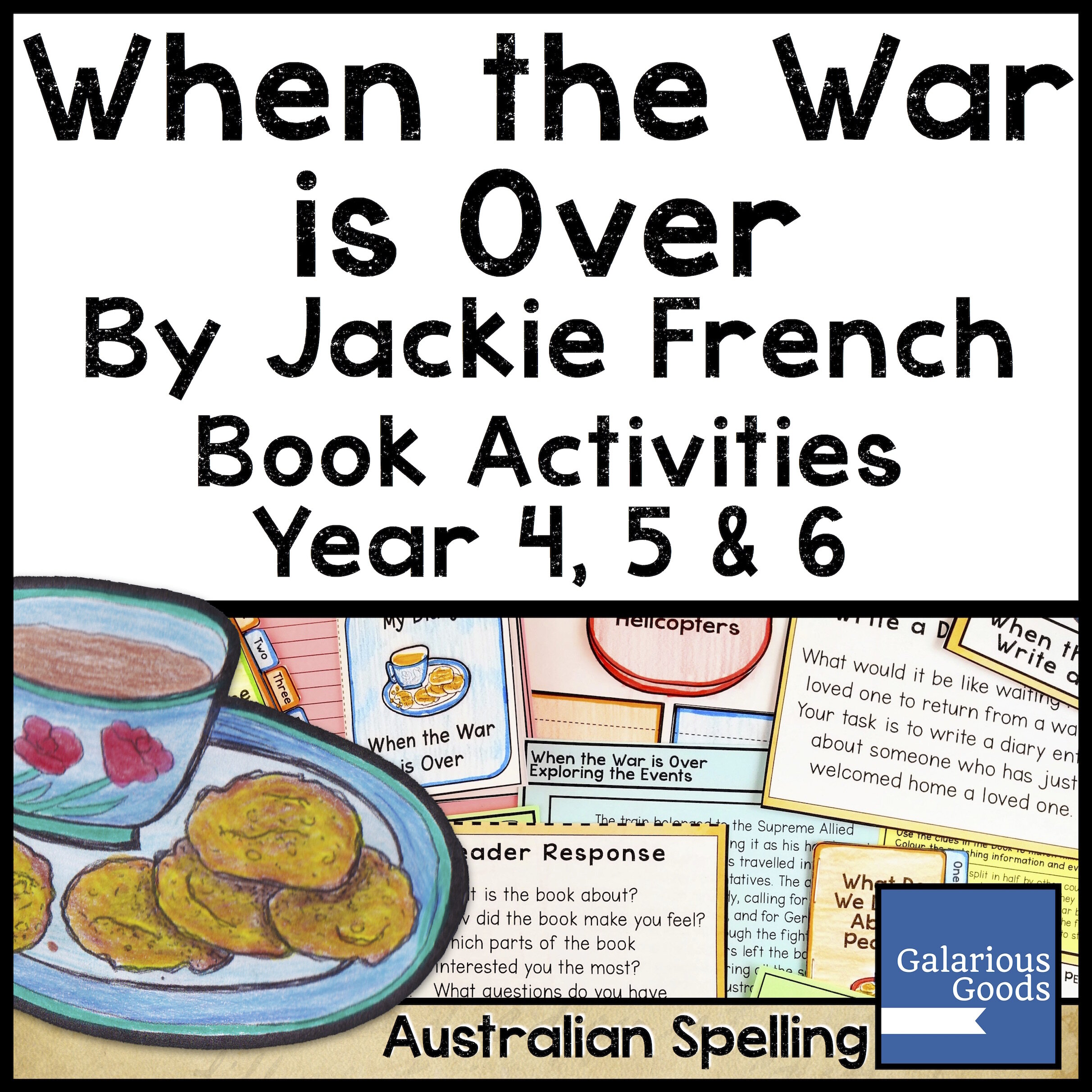5 Anzac Day Picture Books to Use in Your Classroom
/Anzac Day is an important date in the Australian calendar, but it can be a complex occasion to discuss with students. Much of Anzac Day and its place in the Australian story is based in the actions of countries and individuals more than 100 years ago. How can we explain that to students in the often short time we have? How can we show them what it was like and how that echoes into our world today.
One way to bring Anzac Day to our students is through some of the fabulous picture books which have been written and released to bring stories and reflections to young people. Here I look at five of them and suggest some ways they can be used in the classroom.
The Beach They Called Gallipoli by Jackie French and Bruce Whatley
This book, which is probably best suited to upper primary and beyond, is more of an overview of the Gallipoli campaign than a narrative. Like French and Whatley's natural disaster books, it takes us through a timeline, using highly descriptive phrases and effective images to give us a glimpse into what it would have been like. We start before the landing, seeing calmness, work through the Gallipoli campaign with short pieces of text and photos, drawings and primary source ephemera giving us more information, then see how people came to remember the campaign 100 years later.
Exploring this book in the classroom:
Students can discuss the use of real images in the book. What do they tell the reader? How do we react to real images rather than drawings or paintings? How are they manipulated and what effect does that have?
-Students can examine the descriptive words and phrases used and what feeling they add to the book.
ANZAC Biscuits by Phil Cummings and Owen Swan
This book is suitable for younger and older students. It tells two parallel stories - the story of a young girl and her mother making ANZAC biscuits for her father, and the story of the father - away from home at the war front. It's a story of love and family, but also a story of the fear and harsh conditions at war. Keen readers will want to flip back and forward between pages, looking for the similarities and connections the author and illustrator have included and some of the differences between now and the world of the story (I love the wood stove which reminds me of the one my great-grandmother had).
Exploring this book in the classroom:
Students can research ANZAC biscuits and how they came to be called that. If you have access to a kitchen, this could be a good time to bake ANZAC biscuits and look at procedure writing and reading
Students can create a chart of the connections, similarities and differences shown in the book
The Little Stowaway by Vicki Bennett and Tull Suwannakit
This book is suitable for younger and older students. It is a relatively simple tale of a French orphan adopted by an Australian airman who has to take significant measures to bring him home after World War One. In some ways, though, it is the details which aren't provided which allow for greater exploration. What happened to other French orphans? What were the Australian air men doing? What was it like being an air man in World War One?
Exploring this book in the classroom:
Students can use this book as inspiration to brainstorm questions about World War One and what it was like for soldiers
Was it right to smuggle Honoré home? Students can discuss whether he should have been left in France or whether bringing him back to Australia was the right thing to do
Lone Pine by Susie Brown and Margaret Warner (Illustrated by Sebastian Ciaffaglione)
Suited to middle primary and older, this book tells the story of the Lone Pine and how trees were grown in Australia from a pine cone sent home. As these trees - and later trees - grew, they have been planted around Australia as memorials to World War One. As well as telling the story of trees, this tells the story of a family looking for and coming to terms with losing a brother and son. A particularly strong symbolic moment comes when only two of the three saplings survive to grow into strong trees.
Exploring this book in the classroom:
Lone Pine uses very strong, bold lines in the illustration. Students can experiment with their own bold line artwork using paint or oil pastels
Students can research more about the battle of Lone Pine and why it is still remembered today
Memorial by Gary Crew and Shaun Tan
Suited to middle primary and older, this book is the story of a family who have experienced war across three generations, a World War One memorial and the tree which was planted at the first memorial service. It deals with memories and how we make sure things are remembered after we are gone and what happens when part of a memorial is removed. This is a particularly good book to read alongside Lone Pine, since both books deal with some similar themes and ideas.
Exploring this book in the classroom:
Students can visit a local memorial or even one of the bigger memorials in their state. They may draw it, discuss its features and talk about how we preserve those memorials and why its important to preserve them.
Students can discuss the rituals and symbols used at their school or local community ANZAC Day services. They might like to discuss the words which are used and the different elements which are included and how they are memorials as well.

















